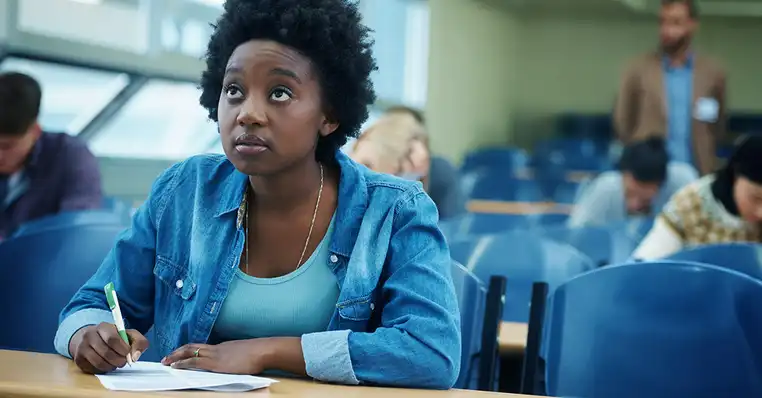Reflection, as a powerful cognitive tool, transcends the boundaries of traditional education. In this blog post, we explore the profound importance of reflection in the classroom, recognizing its role in promoting lifelong learning. From understanding the concept of reflection to practical strategies for implementation, we unravel the transformative impact that reflective practices can have on students’ educational journeys.

1. Understanding Reflection in the Educational Context
a. Defining Reflection
- Reflection: A cognitive process that involves thinking critically about experiences, actions, and outcomes, leading to deeper understanding and personal growth.
b. The Reflective Practitioner
- Educator’s Role: Teachers as reflective practitioners engage in continuous self-evaluation to refine their teaching methods and enhance student learning.
- Student Reflection: Fostering reflection in students encourages them to think critically about their learning experiences and take an active role in their educational journey.
c. Types of Reflection in Education
- Internal Reflection: Personal introspection and self-analysis.
- External Reflection: Collaborative discussions and sharing of perspectives.
- Future-Oriented Reflection: Goal-setting and planning for future learning.
2. The Role of Reflection in Lifelong Learning
a. Promoting Critical Thinking Skills
- Analytical Thinking: Reflection encourages students to analyze their experiences, fostering the development of analytical thinking skills.
- Problem-Solving: Reflective practices empower students to identify problems, explore solutions, and develop effective problem-solving strategies.
b. Enhancing Metacognition
- Metacognitive Awareness: Reflecting on the learning process enhances metacognitive awareness, allowing students to understand how they learn best.
- Adaptability: Metacognitive skills acquired through reflection contribute to adaptive learning, enabling students to navigate diverse learning environments.
c. Self-Directed Learning
- Ownership of Learning: Reflection instills a sense of ownership in learning, encouraging students to take responsibility for their academic progress.
- Intrinsic Motivation: Self-directed learners, cultivated through reflection, are more likely to be intrinsically motivated to pursue knowledge beyond the classroom.
3. Practical Strategies for Implementing Reflection in the Classroom
a. Journaling and Writing Exercises
- Reflective Journals: Implement regular journaling activities where students can express thoughts, emotions, and insights related to their learning experiences.
- Essay Reflections: Assign reflective essays that encourage students to articulate their learning journey, challenges faced, and strategies for improvement.
b. Classroom Discussions and Debates
- Socratic Seminars: Engage students in Socratic seminars that promote reflective dialogue, allowing them to discuss and analyze various perspectives on a topic.
- Debates and Reflections: After formal debates, encourage students to reflect on the arguments presented, evaluating their own understanding and potential biases.
c. Portfolios and Project Reflections
- Portfolio Assessment: Incorporate reflective components in student portfolios, where they showcase their best work and provide insights into the learning process.
- Project Debriefs: Conclude projects with reflective debrief sessions, allowing students to assess project outcomes, collaboration dynamics, and individual contributions.
d. Digital Reflection Tools
- Blogs and Online Platforms: Utilize digital platforms where students can create blogs or online reflections to document their learning experiences.
- Video Reflections: Introduce video reflections, allowing students to verbalize their thoughts and engage with multimedia as a reflective medium.
4. Overcoming Challenges in Implementing Reflective Practices
a. Resistance to Reflection
- Challenge: Some students may initially resist reflective practices due to discomfort or unfamiliarity.
- Solution: Gradually introduce reflective activities, emphasizing their positive impact on personal and academic growth. Provide supportive and non-judgmental environments for sharing reflections.
b. Time Constraints
- Challenge: Time constraints in the curriculum may limit the allocation for reflective activities.
- Solution: Integrate reflection into existing activities, ensuring that it becomes a natural part of the learning process. Highlight the long-term benefits of reflection in enhancing learning efficiency.
c. Assessment Dilemmas
- Challenge: Assessing reflective activities can be subjective and challenging.
- Solution: Establish clear criteria for assessing reflections, emphasizing the process rather than a predetermined outcome. Use rubrics that focus on critical thinking, depth of analysis, and evidence of learning.
5. Measuring the Impact of Reflection on Lifelong Learning
a. Quantitative Assessments
- Academic Performance: Analyze correlations between students who engage in reflective practices and their academic performance over time.
- Standardized Test Scores: Explore the relationship between reflective behaviors and standardized test scores.
b. Qualitative Feedback
- Student Testimonials: Collect testimonials from students about the impact of reflection on their learning experiences and academic growth.
- Educator Observations: Seek feedback from educators about observed changes in students’ engagement, critical thinking, and self-directed learning.
c. Long-Term Outcomes
- Post-Education Surveys: Conduct surveys with alumni to gauge the long-term impact of reflective practices on their ability to learn independently and adapt to new challenges.
- Career Success Stories: Explore success stories of individuals who attribute their lifelong learning habits to reflective practices adopted during their education.
6. Success Stories and Testimonials
a. Individual Student Transformations
- Success: Share stories of individual students who, through reflective practices, experienced significant personal and academic transformations.
- Testimonials: Feature testimonials from students expressing gratitude for the impact of reflection on their learning journey.
b. Educator Perspectives on Reflective Teaching
- Success: Highlight the perspectives of educators who have witnessed positive transformations in their students through the incorporation of reflective practices.
- Best Practices: Share best practices and innovative teaching methods that educators have employed to integrate reflection into their classrooms.
Conclusion
In conclusion, the incorporation of reflection in the classroom emerges as a powerful catalyst for promoting lifelong learning. By embracing reflection as an integral part of the educational process, educators empower students to become critical thinkers, self-directed learners, and active contributors to their own academic and personal growth. Reflection, as a habit cultivated within the classroom, propels individuals towards a future where the pursuit of knowledge becomes a lifelong journey.